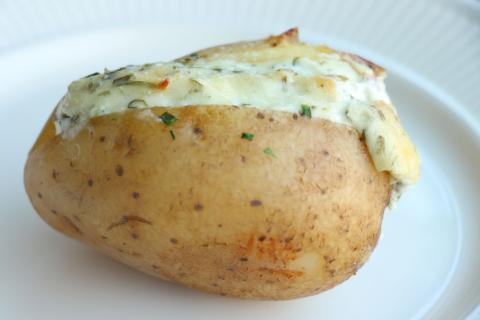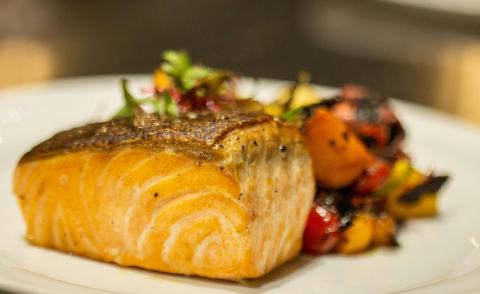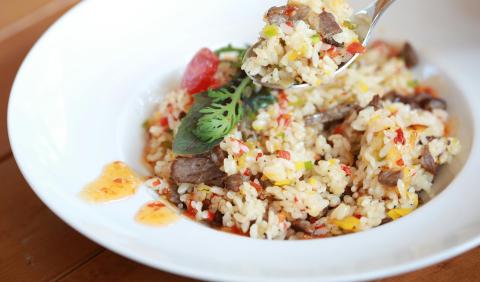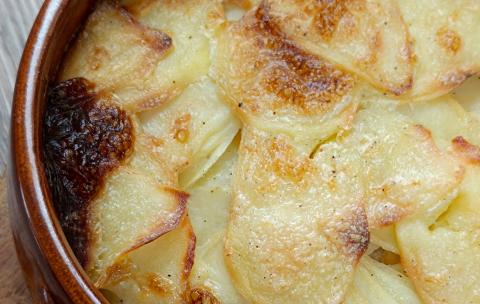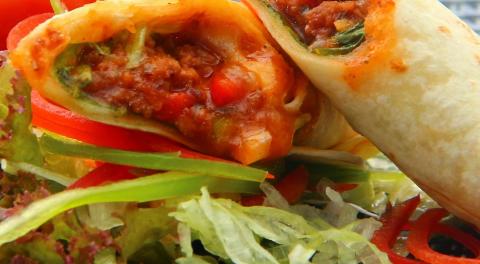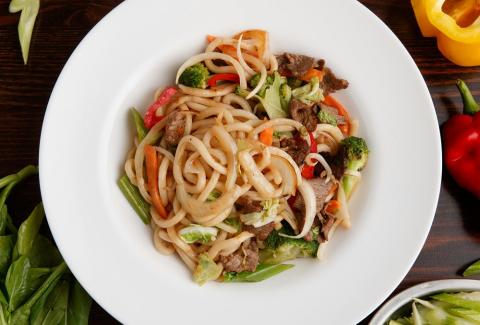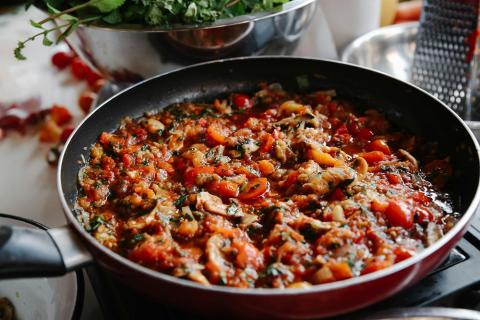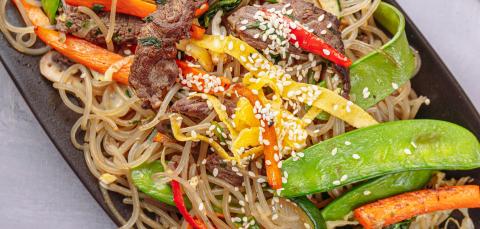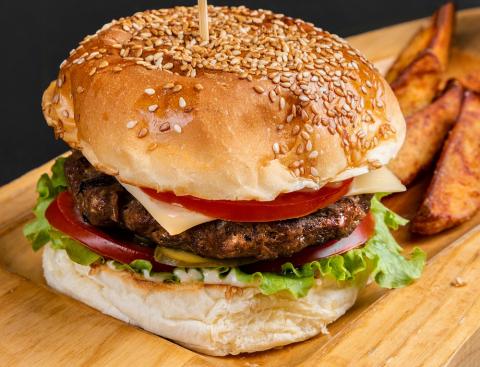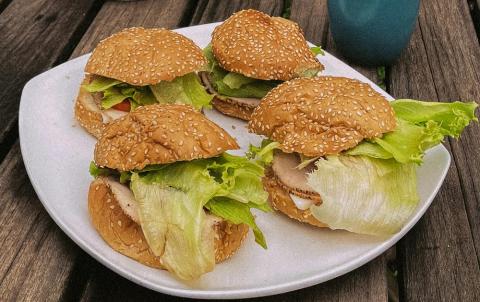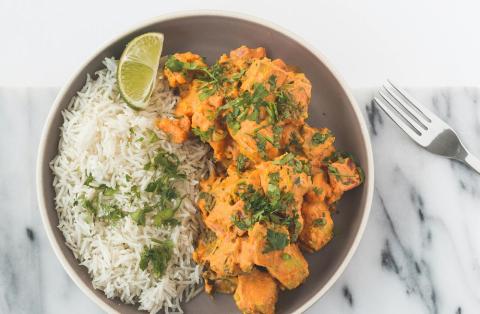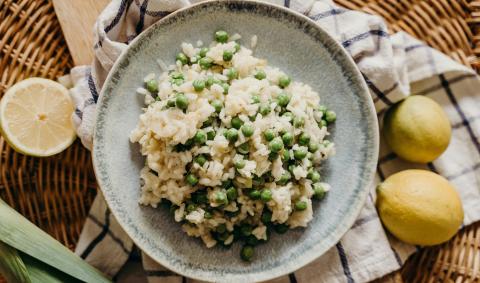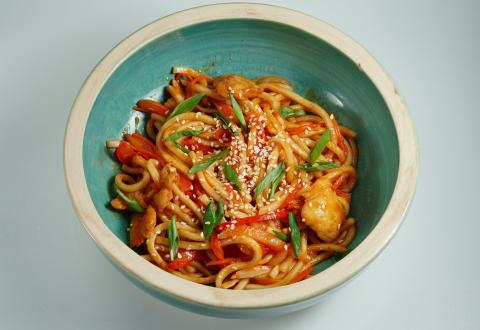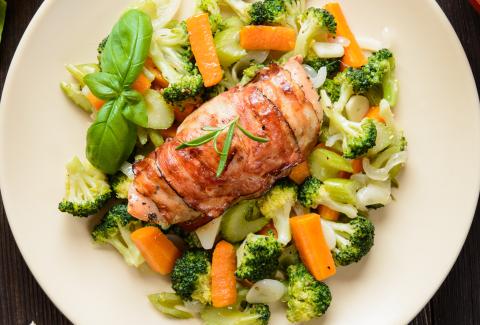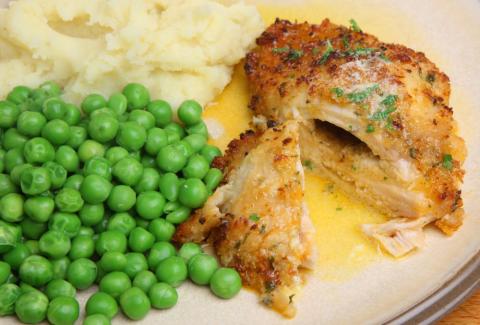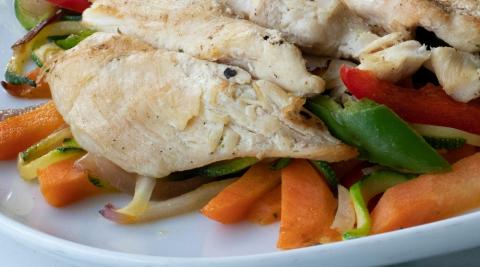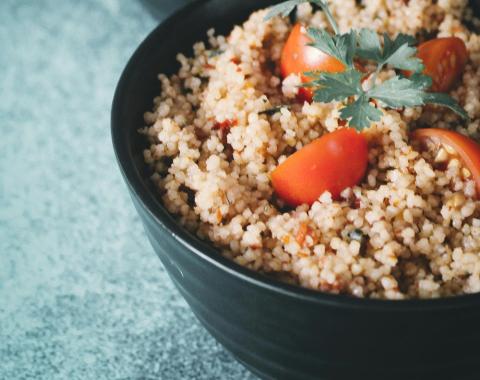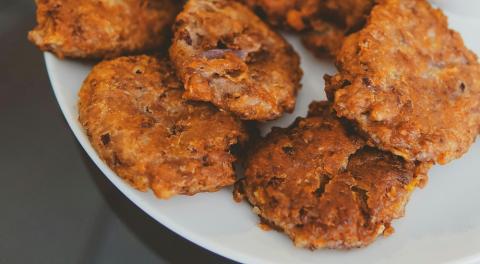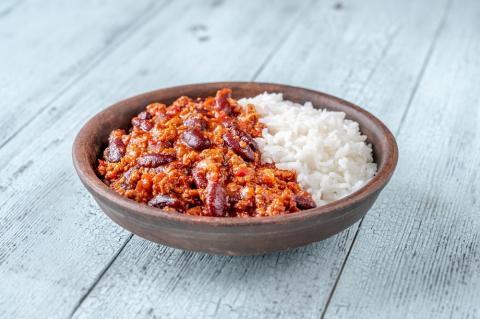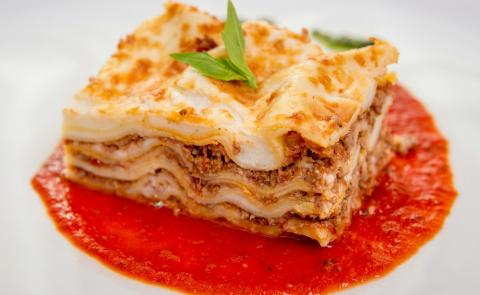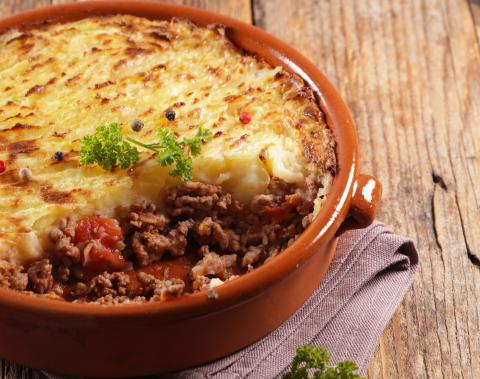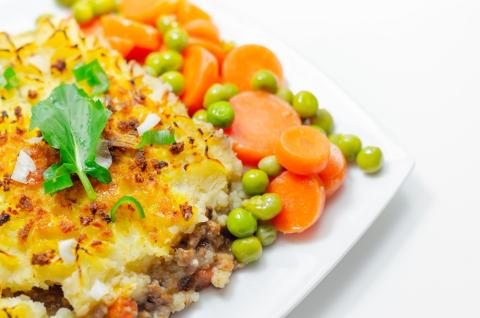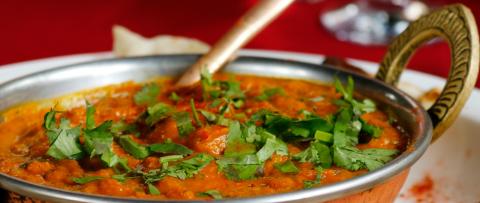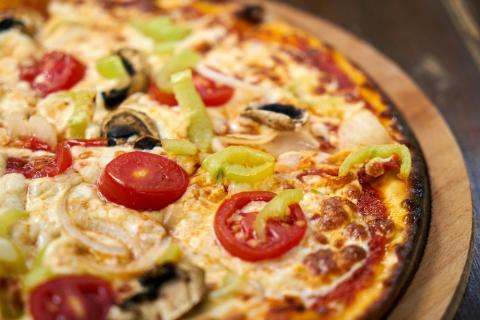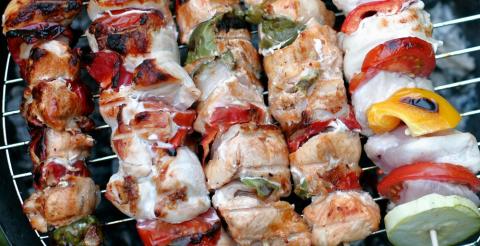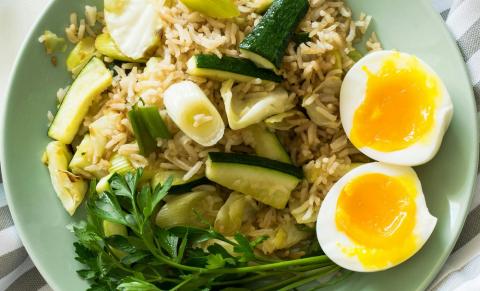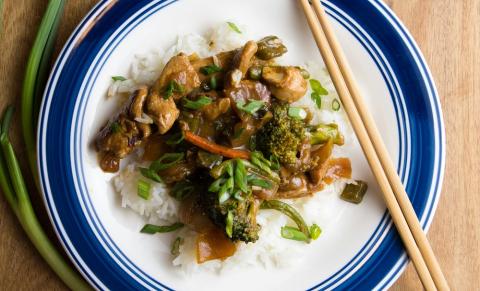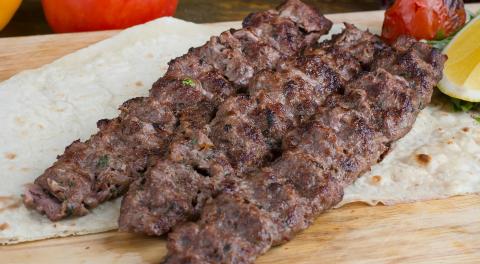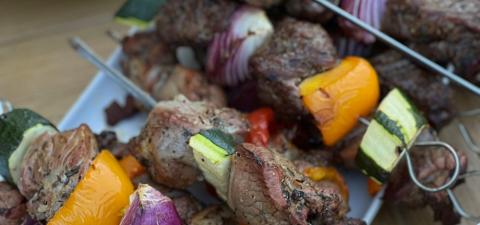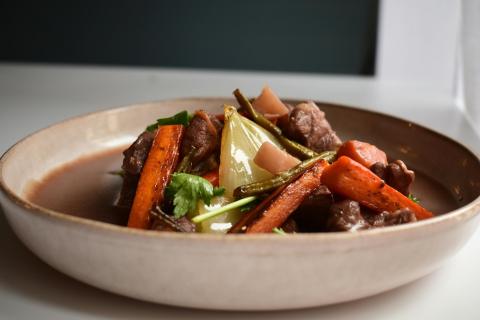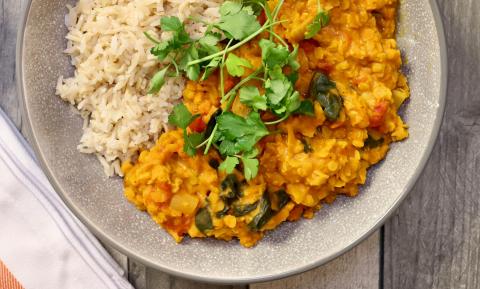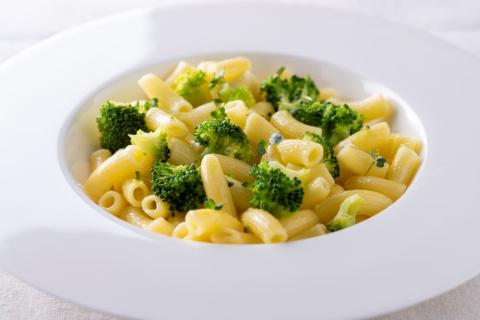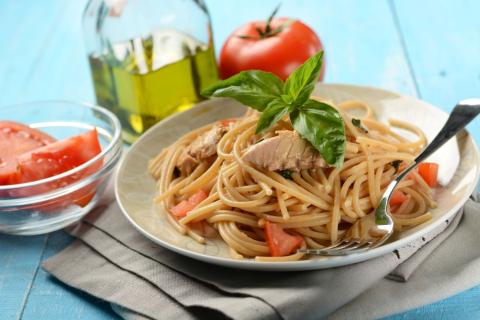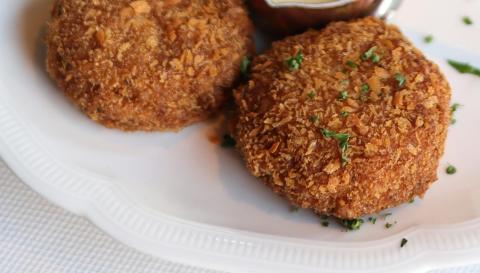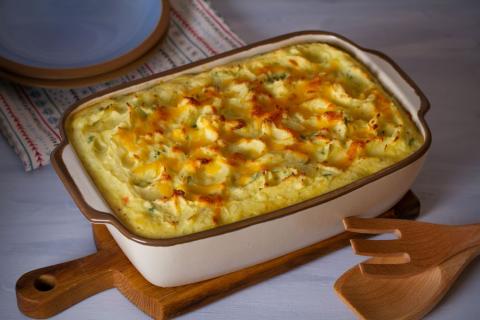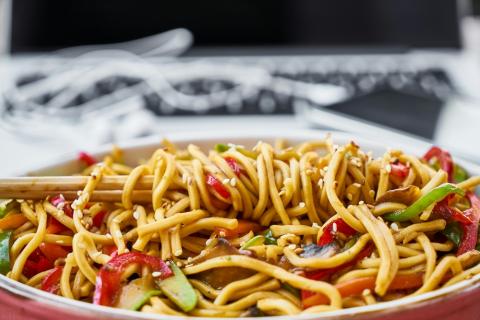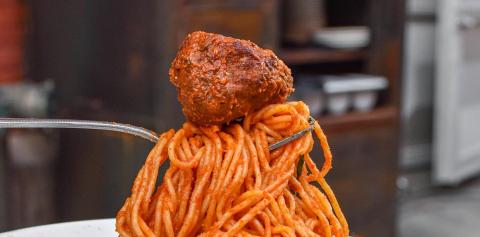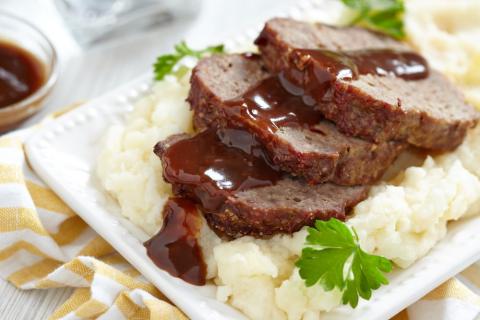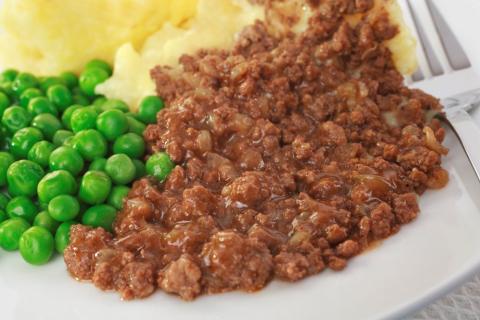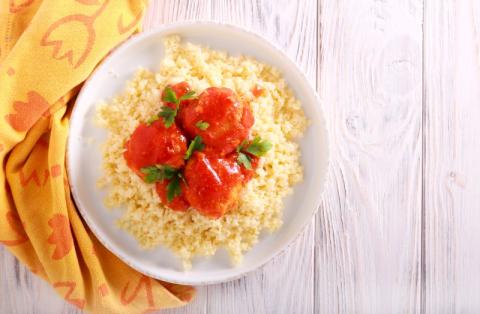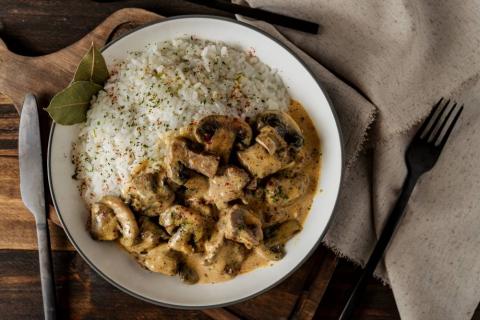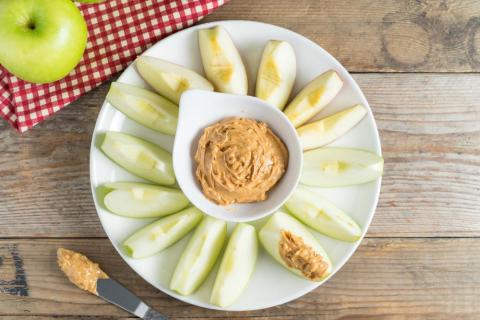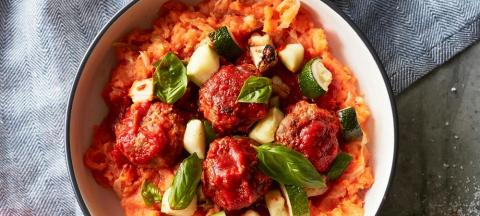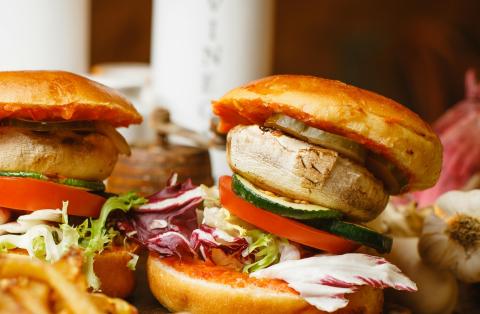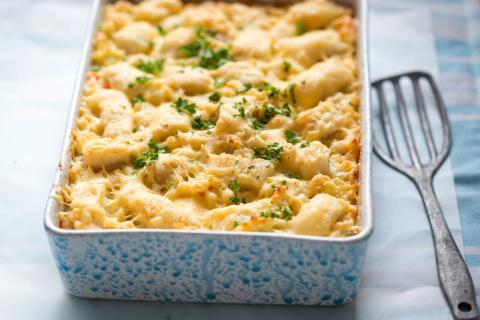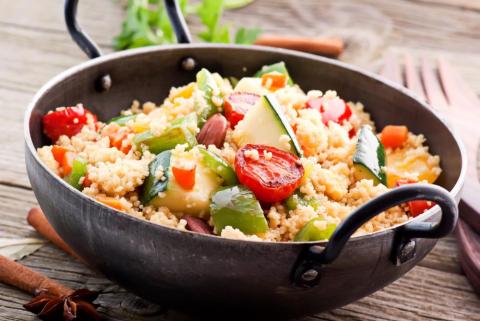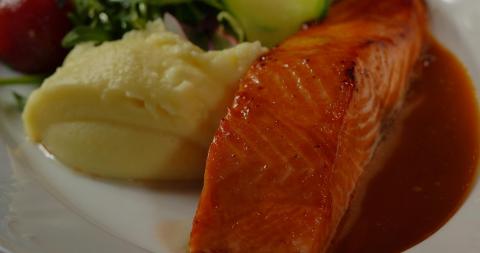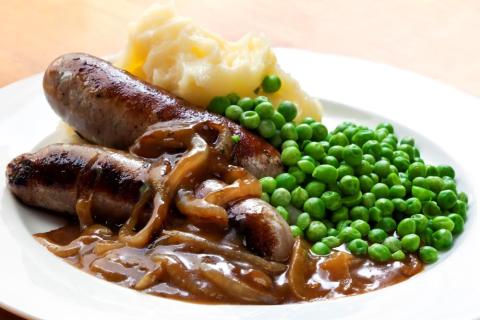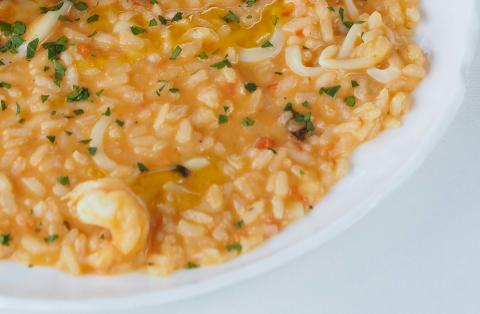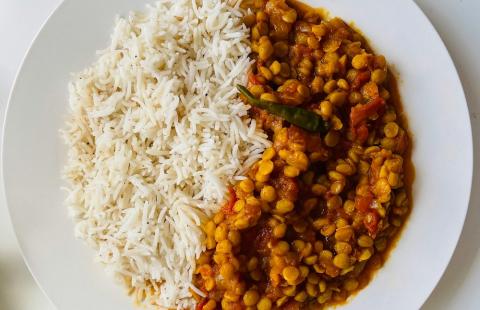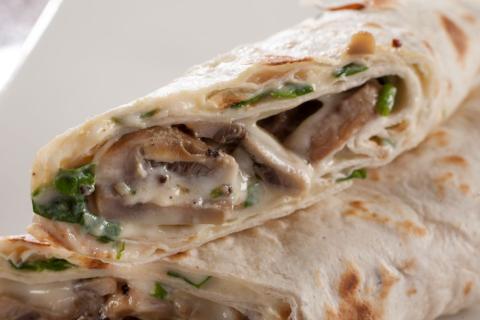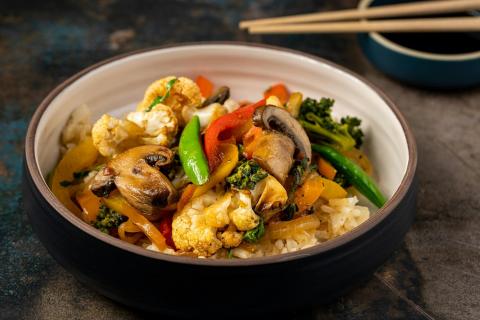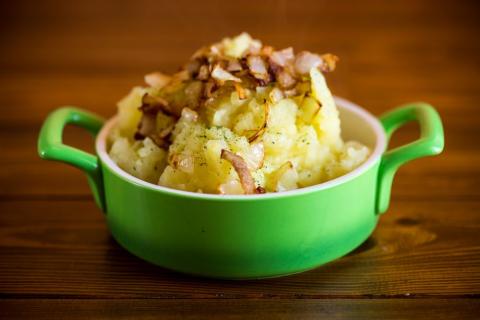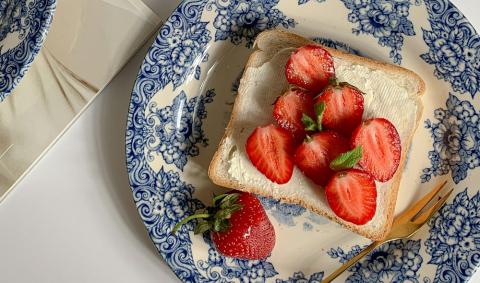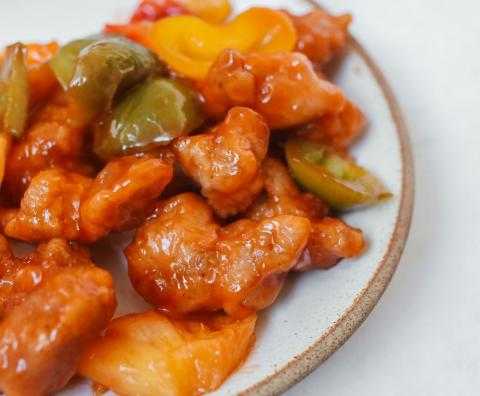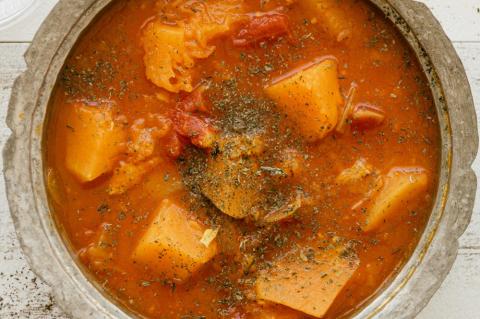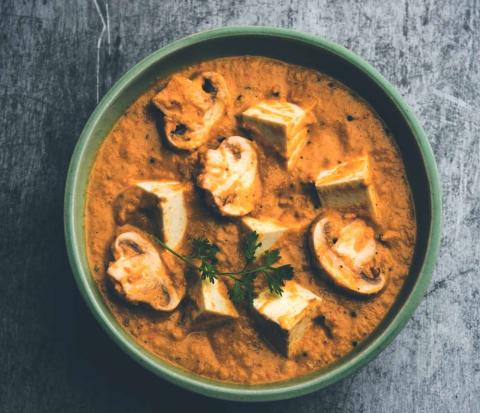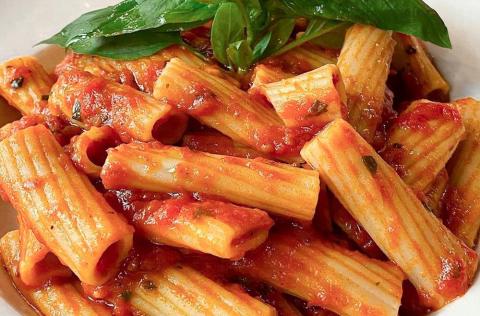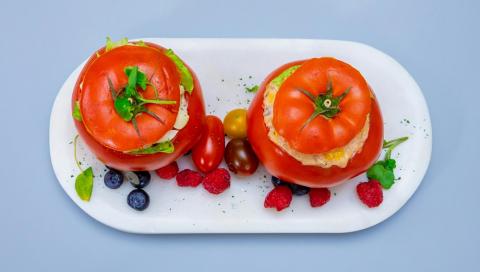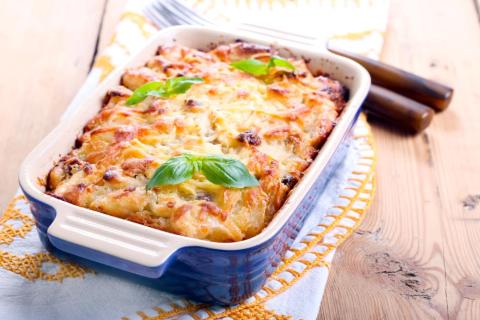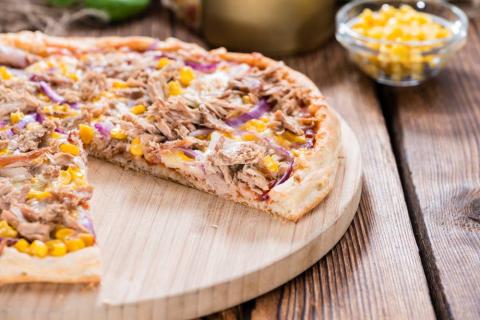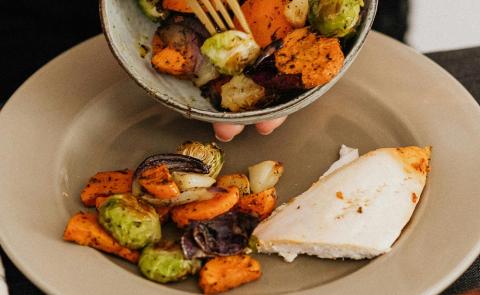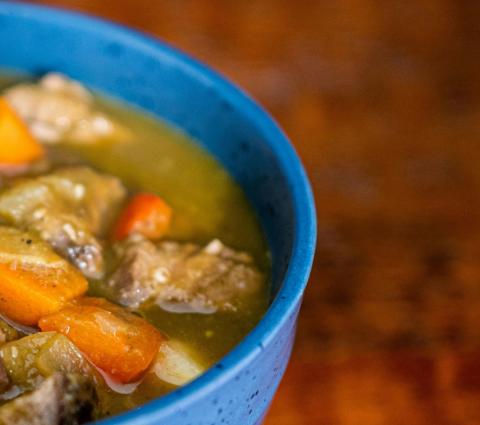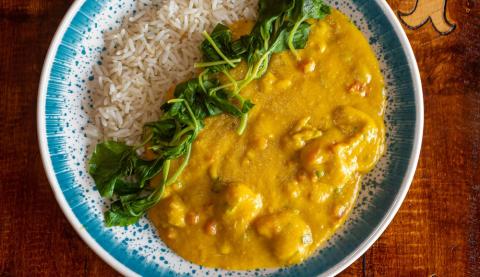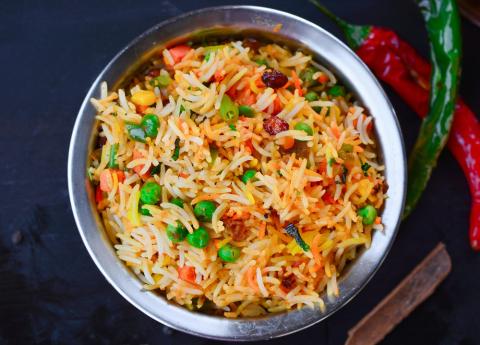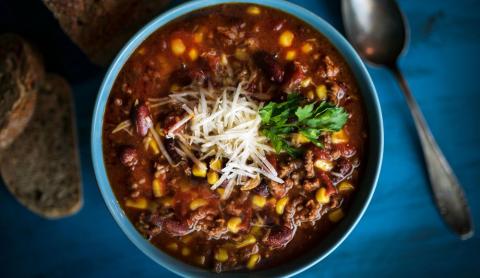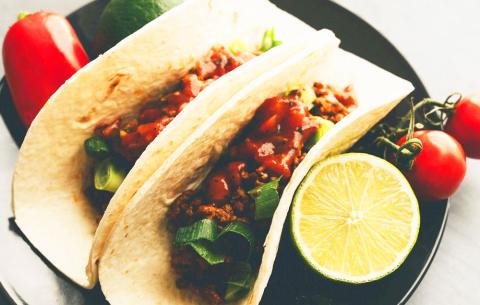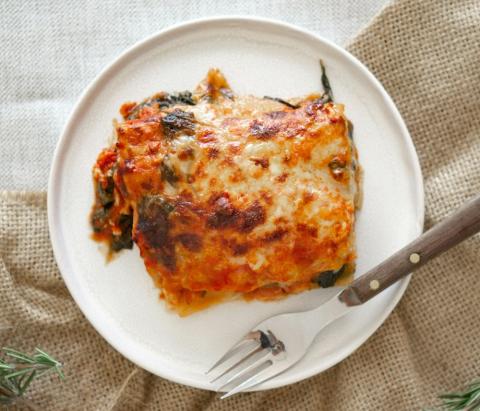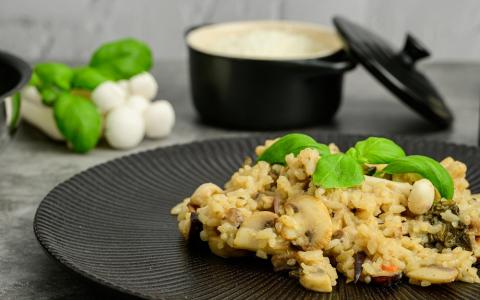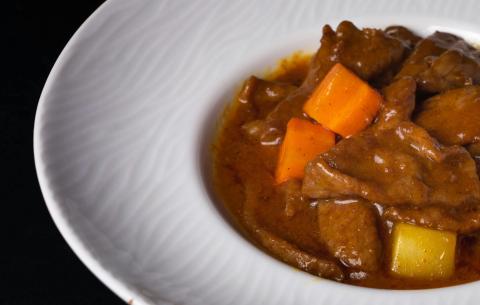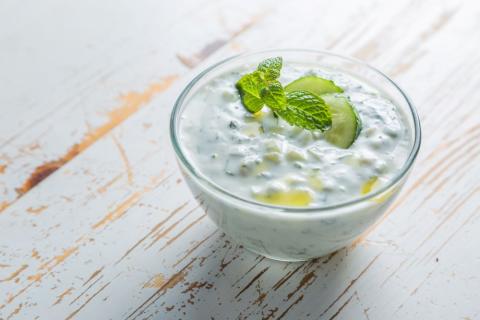- 8 (400g) Reduced Fat Pork Sausages
- ¼ Bag (200g) Frozen Spinach
- 1 Pot (200g) Reduced Fat Crème Fraîche
- 1 Tablespoon (10g) Vegetable Oil
- 1 (150g) Onion
- 2 (6g) Garlic Cloves
- 6 (120g) Lasagne Sheets
- ½ Pot (250g) Passata
- 2 Tablespoons (30g) Tomato Puree
- 1 Teaspoon (1g) Dried Mixed Herbs
- 5 Tablespoons (50g) Grated Reduced Fat Mature Cheddar
Ingredients
Allergy Disclaimer
Always check the label of each ingredient for allergy warnings.
Method
- Set the oven to 180°C / 160°C fan oven / 350°F / gas mark 4.
- Split the sausages along their length and remove the skins.
- Peel and finely chop the onion and garlic.
- Heat the oil in a pan and add the sausages. Break up and mash the meat with a wooden spoon whilst frying for 5-10 minutes until brown.
- Add the onions and garlic to the pan and fry for around 5 minutes until softened, stirring occasionally.
- Stir in the spinach and crème fraîche.
- Place the lasagne sheets in a baking tray or large bowl (in a single layer if possible), cover them with boiling water and allow them to soften for about 5 minutes. Don't let the sheets overlap and stick together.
- While the lasagne sheets are soaking, mix together the passata, tomato puree and mixed herbs in a large jug.
- Grate the cheese.
- Drain the lasagne sheets.
- Put half of the tomato mixture in the bottom of an ovenproof dish, then a layer of lasagne sheets, followed by a layer of the sausage and spinach mixture. Repeat these layers and finish with a sprinkle of cheese.
- Bake in the preheated oven for 25-30 minutes, and serve hot.
Try wholemeal lasagne to increase fibre content and add some other vegetables to boost your 5 a day.
Time Saver Tips
Prepare in advance and bake in the oven when required for around 40 minutes.
Cost Saver Tips
You could also use low-fat plain yoghurt if you don’t have any crème fraîche. If you don't have passata try using drained tinned tomatoes instead.
Tips for Kids
Why not let your wee one pick which green veggies to go in this? Things like cabbage, peas or broccoli (cut into small bits) are all just as tasty instead of spinach. If they get to pick, they might even be more likely to eat it!
Nutritional Information
Based on a single serving of 342g (% of an adult's reference intake)
Energy
462 kcals ( 23 %)
1,937 kJ ( 23 %)
Fat
8.1 g ( 41 %)
Saturates
40.8 g ( %)
Sugar
8.7 g ( 10 %)
Salt
1.6 g ( 26 %)
Detailed nutritional information
| Per 100g | Per 342g serving | |
|---|---|---|
| Energy Kcals | 135 | 462 |
| Energy Kj | 566 | 1,937 |
| Protein | 9.5 g | 32.5 g |
| Total Fat | g | g |
| Saturated Fat | 2.4 g | 8.1 g |
| Carbohydrates | 11.9 g | 40.8 g |
| Total Sugars | 2.5 g | 8.7 g |
| NSP Fibre | 1 g | 3.4 g |
| Sodium | 184 mg | 629 mg |
| Salt | 0.5 g | 1.6 g |
Find out about nutritional labelling
Nutrition labels on the front of packaging
- Most of the big supermarkets and many food manufacturers display nutritional information on the front of pre-packed food.
- Front of pack nutrition labels provide information on the number of grams of fat, saturated fat, sugars and salt and the amount of energy (in kJ and kcal) in a serving or portion of a recipe.
- The labels also include information about reference intakes (expressed as a percentage) which are guidelines about the approximate amount of particular nutrients and energy required for a healthy diet.
- The colour coding tells you at a glance if the food has high (red), medium (amber) or low (green) amounts of fat, saturated fat, sugars and salt.
- The more greens on the label, the healthier the choice
- Amber means neither high nor low, so you can eat foods with all or mostly ambers on the label most of the time.
- Reds on the label means the food is high in that nutrient and these are the foods we should cut down on. Try to eat these foods less often and in small amounts.
Food shopping tips
If you’re trying to decide which product to choose, check to see if there's a nutrition label on the front of the pack. This will help you to quickly assess how your choices stack up. You will often find a mixture of red, amber and green colour coding for the nutrients. So when you're choosing between similar products, try to go for more greens and ambers and fewer reds if you want to make a healthier choice.
 Activities & Play
Activities & Play Behaviour
Behaviour Childcare
Childcare Development & Growing Up
Development & Growing Up Family, Friends & Relationships
Family, Friends & Relationships Feeding Your Baby
Feeding Your Baby Food & Eating
Food & Eating Health & Safety
Health & Safety Mental Health & Wellbeing
Mental Health & Wellbeing Money & Work
Money & Work Online Behaviour & Safety
Online Behaviour & Safety Pregnancy & First Days
Pregnancy & First Days School & Education
School & Education Sleep
Sleep


